60 years ago today, the first commercial communications satellite, Intelsat I, was placed in geosynchronous orbit. The tiny 2-foot device (nicknamed Early Bird for the proverb “The early bird catches the worm”) was the first to provide direct and nearly instantaneous contact between Europe and North America, handling television, telephone, and fax transmissions. READ about its development… (1965)
It was built by the Space and Communications Group of Hughes Aircraft Company (later Hughes Space and Communications Company, and now Boeing Satellite Systems).
Early Bird was one of the satellites used in the then-record-breaking broadcast of Our World, the first live multinational multi-satellite television production, that was broadcast in 24 countries to around 700 million viewers. The most famous segment is one from the United Kingdom starring the Beatles performing their song “All You Need Is Love” for the first time.
Early Bird was in active service for 4 years and 4 months, being deactivated in January 1969, although it was briefly activated in June of that year to serve the Apollo 11 flight when the Atlantic Intelsat satellite failed. It was deactivated again in August 1969 and has been inactive since that time (except for a brief reactivation in 1990 to commemorate its 25th launch anniversary).
MORE Good News on this Date:
- Peter the Great repealed his tax levied on men who wore beards, which was meant to encourage the beardless fashions of France, but infuriated Russians, who had always cherished long beards as sacred and preserved them with much care (1722)
- The United States Congress convened in New York to begin its first regular session (1789)
- The Jews of Prussia were granted equality (1848)
- Matthew Henson, an African-American, and Robert Peary, another American, along with four Eskimo guides, reached the North Pole (1909)
- The first Tony Awards ceremony celebrated outstanding achievement in the theatrical arts—awarding trophies to actors José Ferrer, Ingrid Bergman, and Patricia Neal, and plays such as Brigadoon and Finian’s Rainbow (1947)
- Simon and Garfunkel, a folk-rock duo, went to No.1 on the US album chart with the soundtrack to The Graduate, and the hit ‘Mrs. Robinson’ (1968)
377 years ago, Lal Qila, or the Red Fort in Old Delhi, was completed. Commissioned by Mughal emperor Shah Jahan when he decided to move his capital from Agra to Delhi, it is the most iconic architectural relic of the Mughal Period, combining styles from the Indian subcontinent with those of Iran. Every year on the national day of India, a flag is hoisted up above the front gate, as it was done on the first day of independence from Britain in 1947.
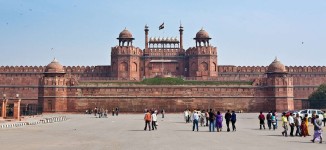
Its design is credited to architect Ustad Ahmad Lahori, who also constructed the Taj Mahal, and is described by UNESCO as the “zenith” of Mughal creativity.
The Red Fort was at the center of a series of near-decadal hand changing between the Iranian empire, subjugated Afghans, the Mughal, and the later Maratha Confederacy. Later, the British took control of the fort as well.
Inside the 1.5-mile walls, major buildings include a covered bazaar where goods were sold to royals and royal visitors, a music hall, a covered audience hall with galleries, and several palaces, including the royal apartments and the Diwan-i-Khas (Hall of Private Audience) where sat the famous Peacock Throne. (1648)
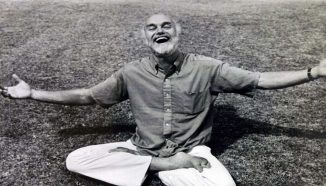
95 years ago today, the original American guru, Ram Dass, was born. His books, particularly 1971’s Be Here Now are considered seminal pieces in the development of Eastern mysticism and spirituality in America. In 1967, Richard Alpert traveled to India and became a disciple of Hindu guru Neem Karoli Baba, who gave him the name Ram Dass, meaning “Servant of Ram”. In the coming years, he founded the charitable organizations Seva Foundation, an eye care charity (third eyes included), and Hanuman Foundation, which aims to promulgate spiritual well-being through community service.
Dass was actually an accomplished academic, achieving a master’s in psychology and teaching at Stanford, as well as holding a professorship at Harvard where he would come in contact with a certain Timothy Leary. His co-research on psilocybin and other psychedelic substances got him dismissed from Harvard, after which he embarked in 1967 on a journey to India. Experiencing a spiritual transformation, he returned to the US and wrote Be Here Now, which has been called the countercultural bible, and a huge aspect of the literary side of the hippie and free-love movements.
The wisdom contained within is classic yogic thought, and very easy to read, such as this passage below which doesn’t require special interpretation of any kind to understand.
“When you go out into the woods, and you look at trees, you see all these different trees. And some of them are bent, and some of them are straight, and some of them are evergreens, and some of them are whatever. And you look at the tree and you allow it. You see why it is the way it is. You sort of understand that it didn’t get enough light, and so it turned that way. And you don’t get all emotional about it. You just allow it. You appreciate the tree. The minute you get near humans, you lose all that. And you are constantly saying ‘You are too this, or I’m too this.’ That judgment mind comes in. And so I practice turning people into trees. Which means appreciating them just the way they are.” (1931)
129 years ago today, the first Olympic Games of the modern era opened in Athens–1,500 years after the original games were banned by the Roman emperor.
Because Ancient Greece was the birthplace of the Olympic Games, Athens was chosen as the perfect place to stage the first modern Games. Despite obstacles, the Games of the I Olympiad were regarded as a great success, attracting the largest international participation of any sporting event to that date. The Panathinaiko Olympic Stadium overflowed with the largest crowd ever to watch a sporting event.
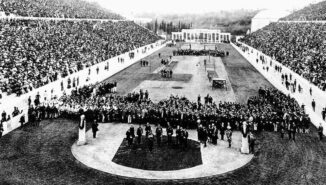
The highlight for the Greeks was a victory medal in the marathon for their own Spyridon Louis, a former soldier who was encouraged to try out for the Olympics by his former commanding officer. Following his victory, he was celebrated as a national hero—and later became a police officer and a farmer. (1896)
And, 45 years ago today, Post-It Notes were introduced across the United States after an accidental concoction in a 3M laboratory led one inventor to try using the weak adhesive as a bookmark. In 1968, Dr. Spencer Silver, a scientist at 3M in Kentucky, was attempting to develop a super-strong glue. Instead, he accidentally created a “low-tack”, reusable, pressure-sensitive adhesive.

Six years later, a colleague who had attended one of his seminars, Art Fry (above), came up with the idea of using the adhesive to anchor his bookmark in his church hymnal. Fry used the original yellow color chosen because it was the only scrap paper nearby. The product became Post-Its in 1979, and was known as ‘sticky notes’ because the re-adherable strip on its back made it great for temporarily attaching notes to documents and other surfaces because it was so easy to remove without leaving residue. By 2019, 3M was manufacturing 26 different colors. (1980)
Happy Birthday to Paul Rudd who turns 56 today. The actor-comedian-writer co-starred in the films Clueless, The 40-Year-Old Virgin, I Love You, Man; Ant-Man, and Anchorman. While attending acting school in Kansas, where he spent part of his youth, Rudd worked as a Bar Mitzvah disc jockey, and glazing meat at a ham company. His career really took off in 2004 when he became a go-to favorite of director/producer Judd Apatow.
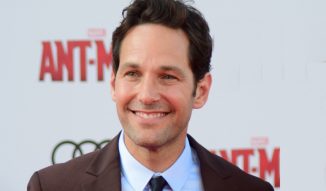
Rudd is a co-founder of The Big Slick, a charity weekend in Kansas City every June that gathers tons of celebrities to play sports and games with kids to support Kansas City’s Children’s Mercy Hospital. And, since 2014, Rudd and fellow actor Jeffrey Dean Morgan have been co-owners of Samuel’s Sweet Shop, a Rhinebeck, NY candy store they saved from closure after the previous owner, a friend of theirs, died suddenly. WATCH a video about his awesome charity… (1969)
SHARE The Milestones, Memories, and Music…




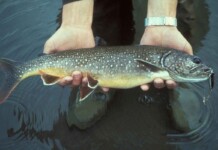















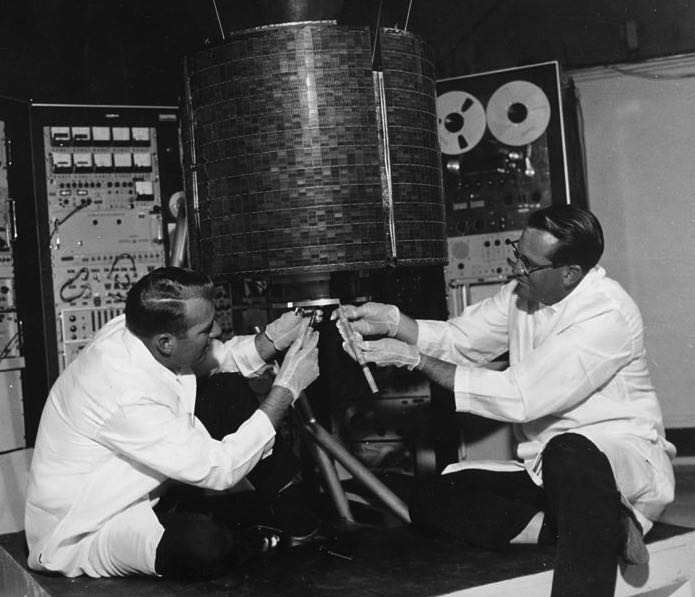
[…] post Good News in History, April 6 appeared first on Good News […]
[…] Source: Good News Network […]